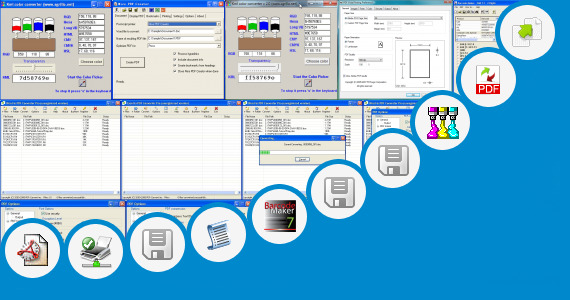Rgb To Ral Converter Free
Would you like to convert the CMYK color to a RGB model? This is a free online color code converter, transform a color hue to another color model, supports three color models, CMYK, RGB and HEX, they can be converted to each other. CMYK and RGB The CMYK color model is used in the printing process. Welder Model Number 117-071 Manual there.
I want to convert RGB color code to Ral. Does anybody know the key how to convert RGB code to Ral. This converter is used to convert hex colour into a ral. This online HEX to RAL Converter is used to calculate the equivalent RAL color. HSL To RGB Color.

To understand it, it is best to start with RGB color. The RGB color model (made up of red, green and blue) is used in your computer monitor, and is what you will view your projects in while still on screen. These colors, however, can only be viewed with natural or produced light, such as in the computer monitor, and not on a printed page.
This is where CMYK comes in. CMYK in Graphic Design Graphic designers have to deal with the issue of seeing their work on screen in RGB, although their final printed piece will be in CMYK. Digital files should be converted to CMYK before sending to printers, unless otherwise specified. Because of this issue, it is important to use 'swatches' when designing if exact color matching is important. Swatches provide a designer and client with a printed example of what a color will look like on paper. A selected swatch color can then be chosen in Photoshop (or a similar program) to insure the desired results. Guida World Of Warcraft Italiano Pdf To Jpg there. Even though the on-screen color won't exactly match the swatch, you know what your final color will look like.
You can also get a 'proof' from a printer, which is an example of your printed piece provided before the entire job is run. Difference between RGB and CMYK 'We always get questions from clients in reference to web colors they view on screen and what they see in brochures and other print media.' RGB and CMYK are the two most prominent and typical color spaces / formats / models used in the world of design. In print, web, or digital media, a basic understanding of what the differences are, means a fledgling designer can vastly improve the quality of a project. RGB (Red, Green, Blue) is the typical color space used by electronic displays, monitors, pda screens, etc. In RGB, images are created by combining red, green, and blue light. Process of addition can create millions of different colors by using varying concentrations of the primaries.
So when designing a website, web banner, buttons, e-newsletter, etc., your images and files should be set to this profile. Chances are any image you receive will be RGB by default, but it's always a good practice to check. CMYK is the primary color model used by color printers.
So for flyers, brochures, advertising, newsletters, direct mail pieces, etc. Team Edge Mathematica 9 Keygen Crack here. , a CMYK profile may provide better quality results or a better expectation of what your results will be. CMYK creates different colors in a subtractive process using four colors or inks: cyan (blue), magenta (red), yellow, and black. Chances are your inkjet, bubblejet, or laser printer at home has a CMYK or CMYK variant setup. There are many RGB colors that CMYK printers cannot reproduce. Something that looks good on the monitor may not retain that quality in the printed piece. RGB Colors (what you see on screen) YMCK Color Model (printed with ink) Why Colours Look Different RGB System - Screen Viewing Only!
RGB colour system is only suitable for screen reproduction such as LCD and CRT computer monitors and TV screens. This is not suitable color matching for printing or to colour match from, as each screen may represent colours differently. What may look fine on one screen, may be look completely different on another. This can be due to a number of reasons, whether it be due to individual screen settings such as brightness and contrast or even may be due to different monitor manufactures; i.e. The red, green, and blue components are the amounts of red, green, and blue light that an RGB color contains and are measured in values ranging from 0 to 255.
To see these values, open a drawing program on your computer and delve deep into the color settings. Also you can view some values on new models of CRT and Digital Monitors.